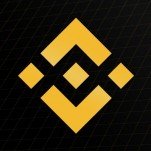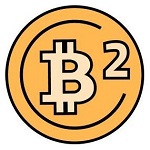EVM
| Projects | Description | Interest lvl | ||
|---|---|---|---|---|
Cronos Chain is a decentralized, open-source blockchain developed by the Crypto.com payment, trading and financial services company. | ||||
Optimism is focused on the development of optimistic rollups, which are scaling layers that aggregate transactions above the base Ethereum layer. The idea is th ... | ||||
Polygon (POL) is a protocol and a framework for building and connecting Ethereum-compatible blockchain networks. Polygon 2.0 is a concrete vision to build the V ... | ||||
Avalanche is the fastest, most reliable smart contracts platform in the world. Its revolutionary consensus protocol and novel Subnets enable Web3 developers to ... | ||||
zkSync is a trustless protocol for scalable low-cost payments on Ethereum, powered by zkRollup technology. It uses zero-knowledge proofs and on-chain data avail ... | ||||
Arbitrum is a layer-2 solution project designed to enhance Ethereum smart contracts in terms of speed scalability while adding additional privacy features to bo ... | ||||
Immutable X is Ethereum’s first zero-knowledge rollup (zk-rollup) scaling protocol for gas-free NFT minting and trading, built in partnership with StarkWare. | ||||
Binance, a crypto exchange, will issue its token coin, called the Binance Coin (BNB). | ||||
Sonic is an Ethereum Virtual Machine (EVM) layer-1 blockchain platform developed by Sonic Labs, previously known for the Fantom network. Sonic offers unpreceden ... | ||||
Gnosis Chain is an Ethereum sidechain facilitating low-cos blockchain operations. It supports validator sets and community governance, ensuring decentralized co ... | ||||
Aurora is an EVM built on the NEAR Protocol, delivering a turn-key solution for developers to operate their apps on an Ethereum-compatible, high-throughput, sca ... | ||||
Moonbeam is an Ethereum-compatible smart contract platform that makes it easy to build applications on Polkadot. | ||||
Clover is a Polkadot parachain, committed to providing easy‑to‑use blockchain infrastructure and creating a one‑stop EVM compatible framework for Substrat ... | ||||
Ink is a layer 2 blockchain built on the Optimism Superchain, focusing on providing fast, secure, and interoperable financial solutions. | ||||
Unichain is a DeFi-native Ethereum L2, built to be the home for liquidity across chains. | ||||
Zircuit is a zero-knowledge rollup that's fully EVM-compatible, enhancing Web3 capabilities. It features a hybrid architecture combining zero-knowledge proofs w ... | ||||
Magic Eden is the largest NFT marketplace on the Solana blockchain. It allows traders to buy, sell, mint and manage tokens, and it includes a thriving secondary ... | ||||
Succinct is a performant, open-source zero-knowledge virtual machine (zkVM) that verifies the execution of arbitrary Rust (or any LLVM-compiled language) progra ... | ||||
Abstract is a consumer-focused Layer-2 blockchain. | ||||
Fuse nextgen zkEVM is about to launch with an upcoming node sale that will bootstrap the liquidity, governance and partnerships for the next payments infrastruc ... | ||||
Humanity Protocol is a network aimed at providing sybil-resistant blockchain solutions to authenticate the first billion users on the web. It offers developers ... | ||||
Zora is a scalable Layer 2 built on Ethereum, prioritizes NFTs and media over traditional DeFi applications, enabling fast and cost-efficient transactions. The ... | ||||
MegaETH is an EVM-compatible blockchain that brings Web2-level real-time performance to the crypto world for the first time. MegaETH goal is to push the perform ... | ||||
Bsquared (B²) Network is an EVM-compatible Rollup built on zero-knowledge proof verification commitment on the Bitcoin blockchain. Rollup data and zk proof ver ... | ||||
Berachain is a high-performance EVM-Identical Layer 1 (L1) blockchain utilizing Proof-of-Liquidity (PoL) as a consensus mechanism, and built on top of a modular ... | ||||
Aligned Layer, deeloped by Yet Another Company, is a ZK verification layer built atop the EigenLayer. Aligned Layer platform facilitates cost-effective verifica ... | ||||
0G is a Modular AI Chain featuring a scalable programmable Data Availability (DA) layer tailored for AI dapps. Its modular technology facilitates seamless inter ... | ||||
Plume Network is a Layer 1 blockchain platform designed to integrate real-world assets into the blockchain. It supports diverse asset investments, including art ... | ||||
Blast is the L2 that helps you earn. Blast is the first L2 that incorporates native yield. Your balance on Blast compounds automatically.Funding Rou ... | ||||
Story Protocol is a protocol that aims to create, manage, and license new intellectual property on the blockchain. It seeks to democratize intellectual property ... | ||||
Fuel Network is the fastest modular execution layer written on Sway language delivering high security and flexible throughput. Today, Fuel is the trying to be t ... | ||||
SynFutures is a decentralized derivatives exchange (DEX) that allows anyone to list and trade futures on any asset with a price feed—cryptocurrencies, stocks, ... | ||||
RedStone delivers frequently updated, reliable and diverse data for your dApp and smart contracts. RedStone is a data ecosystem that delivers fast and accurate ... | ||||
Morpho is a peer-to-peer layer built on top of lending pools such as Compound (and soon Aave). Rates are seamlessly improved for both suppliers and borrowers wh ... | ||||
Lisk is a Layer 2 (L2) blockchain network built on the Optimism (OP) Stack, designed to enhance Ethereum's scalability and efficiency. By operating as an optimi ... | ||||
Kite AI is designed to support AI development on blockchain infrastructure, addressing the limitations of traditional blockchains that struggle with scalability ... | ||||
Turtle.Club is a protocol that tracks liquidity providers’ (LPs) on-chain activities like providing liquidity and swapping across partner protocols. It reward ... | ||||
Pharos is an ultra-fast, EVM-compatible blockchain platform, designed to revolutionize finance by seamlessly connecting traditional and decentralized systems. O ... | ||||
CUDIS is a Web3 AI wellness company that develops a smart ring for monitoring health metrics. The ring allows users to access their health data via the Solana b ... | ||||
Blazpay offers an all-encompassing crypto financial solution platform. | ||||
zkVerify is a specialized blockchain network designed for the efficient verification of zero-knowledge proofs (ZKPs). | ||||
2v2 Collectible Card Action Game where strategy and skill collide. Choose your champion, craft your deck, cast summons, and battle for victory in epic arenas ... | ||||
Inference Labs specializes in developing advanced infrastructure and products for Artificial Intelligence.dedicated to crafting infrastructure and products tail ... | ||||
OpenZK Network is a Layer 2 solution based on Zero-Knowledge Rollup (ZK Rollup) technology, designed to address the scalability, cost, and performance limitatio ... | ||||
Lunch Protocol is the premier DeFAI platform for automated farming of yields and airdrops across MoveVM and EVM. With one-click access to whitelisted partner dA ... | ||||
Multiplier is the People's Market Maker - a platform that combines gamified trading with token market making, enabling users to directly influence token prices ... | ||||
Aura is a platform for discovering, trading, and competing on-chain AI Agents. It allows AI Agents to be tested across various domains, such as trading, mathema ... | ||||
Incentiv is a Layer 1 blockchain with a core mission to make blockchain technology easy, accessible, intuitive, and rewarding. The Incentiv network simplifies t ... | ||||
Capx AI is a platform that merges artificial intelligence (AI) with blockchain technology, aiming to empower developers and users to build, monetize, and trade ... | ||||
Chronicle is a data infrastructure provider focused on tokenized assets, offering services related to both decentralized finance (DeFi) and real-world assets (R ... | ||||
Ethereum Virtual Machine in blockchain
You may have noticed that ERC-20 and BEP-20 addresses are identical, or wondered how DEX exchanges work, or perhaps thought about how ERC-20 tokens are created. All of this is possible thanks to the Ethereum Virtual Machine, or EVM for short.
What is EVM
Ethereum Virtual Machine (EVM) is a platform that enables smart contracts and decentralized applications (DApps) to run on the Ethereum network. It functions as a virtual machine, enabling secure and decentralized operation of programs on the Ethereum blockchain.
EVM can be compared to the application layer in the OSI model, which includes familiar programs such as email clients, web browsers, and social networks. In this section, we will take a closer look at how EVM is structured, its role in the Ethereum ecosystem, and what advantages and unique features it offers for developers of decentralized applications.
EVM is a so-called “distributed state machine”, developed in 2015 (creator is Gavin Wood). In Ethereum, state is a big data structure that includes all accounts and account balances.
How does work EVM
EVM updates the state of the network when each new block is added. This procedure is controlled by a special set of rules defined by the EVM itself.
EVM is considered to be a quasi-full Turing machine. In other words, it can actually perform any computation, but with its own limitations (which will be discussed in the next section).
Such capabilities appeared thanks to opcodes – EVM instructions on how to perform certain operations, be it arithmetic operations, operations with blocks and so on. To date, there are about 150 of them.
The calculations themselves follow a rather long scheme.
First, need to write code in a certain programming language, for example Solidity (also created by Gavin Wood). Then the source code is converted into byte-code (a sequence of characters in hexadecimal), which is divided into individual bytes. Finally, computational operations are performed using Opcodes (each opcode is assigned one byte). They work with memory areas that store data and are called “stacks” (roughly speaking, it is a stack of elements in which you can add and remove elements only at its top). The maximum size of a “stack” is 1024 elements of 256 bits each. EVM also has memory areas where more complex types of data are stored – contract memory (temporary storage) and storage (permanent storage).
Now imagine that the network has to process an astronomical number of highly complex operations. It would slow down a lot, and maybe even crash!
Since a smart contract provides only a limited number of computational operations, we are dealing with a quasi-Turing-complete system (also called a “finite automaton”). The unit of account that measures the computational and storage resources to perform operations is gas. Its value is calculated in ethers and depends on the complexity of the operation as well as the workload of Ethereum.
Gas serves three functions:
- It acts as a means of payment that allows computational operations and as a reward for validators who verify transactions. In this case, gas resembles the fuel a car uses to travel from one point to another.
- Gas incentivizes developers to write more concise code. The more complex it is, the greater the load on the network that processes it. Therefore, less efficient code will have a higher cost and developers are forced to reduce it.
- Gas keeps the network secure. Without gas, attackers would be able to run infinite loops that would bring the network to a standstill. This is why blocks have a limit on the number of gas units and therefore a limit on the number of transactions. If it is exceeded, the block will simply not be accepted.
Despite all its popularity and versatility, the Ethereum virtual machine has tangible disadvantages. In particular, the network suffers from high transaction and storage costs, as well as low scalability. These are heavily criticized by the crypto community, although sidechains and L2 projects (second layer solutions) are being developed to solve these problems.
Key advantages of EVMs
EVM has a number of advantages and unique features that make it an important tool for developing decentralized applications:
- Decentralization: EVM runs on thousands of nodes around the world, providing decentralized data processing and contract execution with no single point of failure.
- Turing-completeness: This means that it performs any computation given enough time and resources.
- Security: Due to the isolated execution of smart contracts and the use of cryptography.
- Flexibility: Developers can write smart contracts in multiple programming languages, which are then compiled into bytecode for EVM execution.
Conclusion
The importance of EVM cannot be overemphasized. It has become an environment suitable for the development of smart contracts, and these, in turn, have become the basis for ERC-20 tokens, NFTs, DAOs and DApps, including various games, DeFi projects and even decentralized exchanges (e.g., Uniswap). In addition, decentralization of the system guarantees the security of smart contracts and decentralized applications: disruption of one node (node) will not suspend their functioning.

















































